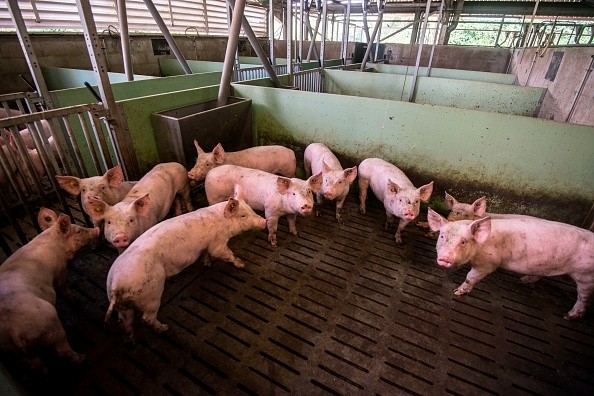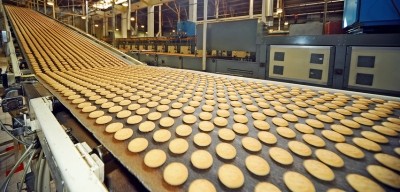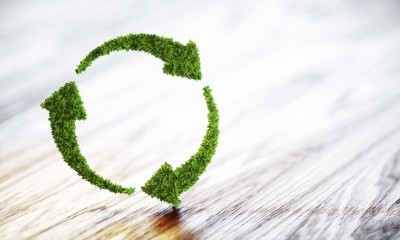Guest Article
‘Unavoidable surplus food is the ultimate sustainable feed, so let’s raise our ambition to find a safe solution’

In his article, Paul Featherstone lays out some valid concerns. He was responding to a press statement from Resource Efficient Food and Drink for the Entire Supply Chain (REFRESH), ahead of its new report recommending a review of the law to allow ‘eco-feed’ to be fed to omnivorous non-ruminants like pigs and chickens, produced by treating surplus food, including meat, in a limited number of tightly regulated off-farm processing facilities.
REFRESH is an EU research project taking action against food waste. It involves 26 partners from 12 European countries and China working towards Sustainable Development Goal 12.3 of halving per capita food waste at the retail and consumer level and reducing food losses along production and supply chains, reducing waste management costs, and maximizing the value from unavoidable food waste and packaging materials.
As one of the co-authors of that report – the result of a four-year long EU-funded project with contributions from many industry, animal health and academic experts from around Europe – I wanted to respond to his concerns from Feedback’s perspective. The environmental and economic benefits of using surplus food as feed are so great that we can surely work together to innovate and find a safe system fit for the 21st Century.
Rewards
Paul Featherstone discusses balancing risks and costs vs. rewards. Let’s start with the rewards.
A REFRESH Consequential Life Cycle Assessment (LCA) found that feeding pigs in Europe on surplus food, instead of purpose grown feed, could lead to an estimated annual reduction of greenhouse gas emissions of 5.8m tons of CO2 equivalent per year, equivalent to taking 3m UK passenger vehicles off the road. Some of the benefit comes from replacing an estimated 800,000 tons of soy currently used in pig feed in the EU.
In addition, a recent study calculated that using 39.2% of post-farmgate food waste at EU level as feed could reduce the land requirement for EU pork by 21.5% (1.8m ha). This could considerably improve the sustainability of the pork industry, at a time when consumers are increasingly concerned about the environmental viability of eating meat.
REFRESH Life Cycle Costing (LCC) analysis examined operational, energy, labor, transport and other costs for treatment plants in the UK and French contexts. It found that using surplus food for animal field could yield net savings of €278m (US$309.8m) per year in the UK (using a liquid feeding system) – [meaning it would be] economically viable without subsidies. In the French case there would be additional costs because of the long transport distance between the suppliers of surplus food and most French pig farms.
A more detailed techno-economic scaling analysis carried out by experts from Wageningen University and Research (forthcoming from REFRESH) shows excellent economic feasibility for a country like the Netherlands where transport distances between surplus food, new treatment plants and pig farms would be small.
REFRESH recommends investigating how the potential cost savings of ‘eco-feed’ can be passed onto pig farmers. In Japan, [surplus food] ‘eco-feed’ is around half the cost of conventional feed and consumers are willing to pay more for ‘eco-pork’ because of its eco-credentials.
Feedback’s consumer survey of 3,491 UK respondents found that 94% said they would buy pork which comes from pigs fed on (safely treated) food waste, and 51% said they’d be willing to pay extra if the pigs have been reared to organic welfare standards. Another paper from the University of Cambridge found strong support (>75%) for the re-legalization of surplus food feeding among both pig farmers and other stakeholders in the UK, if procedures were put in place to ensure surplus food was treated properly.
Moreover, as our economy becomes increasingly circular, taxes on landfill will rise further. Separating surplus food out for compost, anaerobic digestion (AD) or animal feed to make best use of nutrients will be an environmental necessity to keep the globe within safe temperatures. Sending surplus food to animal feed is far better environmentally than sending it to compost or AD.
The risks
Finally, the risks. The European Commission's Scientific Steering Committee (SSC) and European Food Safety Authority (EFSA) have both issued official statements indicating the lack of scientific evidence for the natural occurrence of Transmissible Spongiform Encephalopathies (TSEs) in omnivorous non-ruminants like pigs. Reflecting this, there is no intraspecies recycling ban for non-ruminants in Australia, the US, New Zealand and Japan, where TSE legislation only applies to ruminant livestock. The highly unusual EU ban on all intraspecies recycling seems to be maintained primarily on moral grounds.
However, we agree with Paul Featherstone that diseases like Foot and Mouth Disease (FMD) and African Swine Fever (ASF) require rigorous safeguards because, unlike TSEs, these can be passed on to non-ruminant livestock through untreated surplus food.
In 2017, veterinary epidemiologists, microbiologists and pig nutritionists from the Universities of Leeds, Cambridge and Wageningen, and APHA-DEFRA reviewed existing evidence and the Japanese model of feeding treated surplus food to pigs. These experts agreed that from a technical point of view it is possible to produce safe feed from surplus food through heat treatment, complemented with acidification (fermentation or adding lactic acid, for example).
A thorough literature search of heat and acid inactivation parameters by Wageningen University and Research found that the most resistant diseases to heat-treatment and acidification are FMD and porcine reproductive and respiratory syndrome (PRRS) in the case of pig feed, Newcastle Disease (ND) and Avian Influenza in the case of poultry feed, and Clostridium and Bacillus spores. Inactivation of these pathogens through heat-treatment and acidification would automatically make feed safe from other more heat-sensitive pathogens such as ASF.
Scientists now need to fine-tune what the necessary parameters such as temperature, pH, time, and particle size are before the full legal criteria for a safe treatment procedure are formalized or legalized. These criteria must be economic without compromising on safety. Safety measures to prevent cross-contamination and tightly regulate compliance would need to be similar to those that currently apply to the rendering industry and are covered in detail in the main REFRESH report.
‘Unlocking the benefits’
REFRESH’s findings show great cause for optimism that safe and efficient treatment of surplus food for animal feed can be achieved – and the huge challenge posed by climate change makes research to determine full legal criteria vital.
With such large potential environmental and economic gains, surely, if we put our minds to it, Europe can find a way to unlock the huge benefits of ‘eco-feed’.
Bowman is co-author of the recently released REFRESH report on surplus food use in pig feed.
The views expressed in this article do not necessarily reflect the opinions of the FeedNavigator editorial team.








